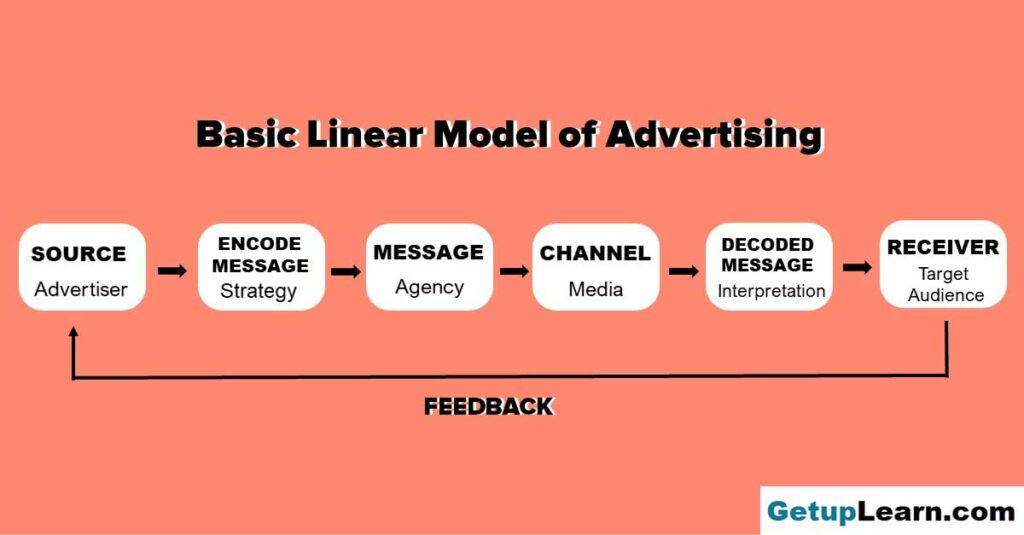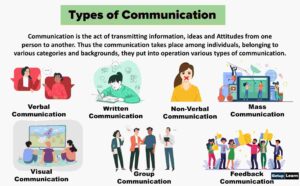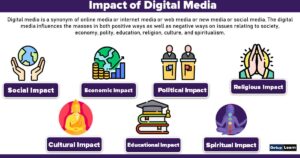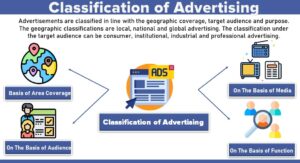Table of Contents
What is History of Advertising?
Advertising has been evolved into a vastly complex form of communication with multiple ways of conveying messages to a target audience. It is said that cave paintings represented the earliest form of advertising. But the first recognized version of advertising was done on papyrus by the Egyptians.

Table of Contents
Advertising existed in different forms before the 15th century. Important advertising at this stage was in the form of trade marks. They were produced by artisans who inscribed marks such as star, moon and tiger on goods like pots and wooden tools.
The origin of advertising is also traceable to the town criers and the village drummers. They used the sound to announce messages. The messages varied from government proclamations to the sale of goods or services on market days. Then there were sign boards such as ‘barrels’ or ‘boots’ hung in front of shops and inns to indicate the availability of products.
Modern advertising flourished with the invention of printing technology. The first printed advertisement in English was ‘poster’ announcement by William Caxton in 1472, a pioneer printer in England. Advertising developed in the US in the 1700s.
Advertising as a distinct means of communication began with the advent of newspapers in the 17th century. Industrial revolution in Europe triggered mass production of goods which marked the beginning of competitive advertising.
The advent of radio in the 1920s and its popularity paved the way for remarkable development in advertising. The advertisers realised the possibilities of radio as a means of conveying persuasive messages directly to the consumers.
In the 1950s television made its appearance and soon it emerged as a novel and powerful medium of advertising. Advertisers could demonstrate the uses of their products and services through television. Television still attracts huge advertising revenue worldwide owing to its ability to reach millions of viewers simultaneously.
It uses a combination of audio, video and text to make advertisements memorable and appealing. Even in the internet era, television retains a lion’s share of the advertising revenue. Marketing through the internet opened new frontiers for advertisers starting with the “dot-com” boom of the 1990s.
In today’s highly competitive environment, new media advertising acts as a cost effective medium targeting a huge online audience. New media can communicate with audience as an interactive platform. Unlike traditional media, it is possible to track the online traffic by using new media tools.
This helps to assess the exact number of exposure for an online advertisement. These features and benefits make online advertising popular among advertisers.
History of Advertising in India
History of advertising in india can be categories into four phases which are:
First Print Advertisement In India
It was James Agustus Hicky’s Bengal Gazette, India’s first newspaper, which carried the first print advertisement in India. Advertising developed with the expansion of the print media. Organized advertising in India started when B. Duttaram set up an advertising agency in Mumbai in 1905.
Most advertising during this stage was targeted at the elite sections of the society. Professionalism came in when J. Walter Thomson set up his shop in 1929.
William Mazzarella, a well-known anthropologist, divides advertising in post-independence India into four phases. The first phase began after Indian independence and lasted till the early 1960s. The overall style of advertising was factual in appearance and the presentation lacked creativity.
Second Phase
The second phase (early 1960s to 1980s) chiefly emerged as a reaction to the first phase and stressed the creativity factor. It carried an Indian professional identity and freed itself from the colonial hang over.
Third Phase
A third phase (1980s) turned away from creative and innovative factors to efficient country wide marketing. The fourth and current phase, which also came into being in the 1980s, is characterized by a synthesis of effective marketing mechanisms and a high level of creativity.
Present of Advertising
Today, Indian advertising has the enormous job of speaking to the world’s most diverse population. English is the only common language for the Indian middle class, but it is not known by large sections of the population. When addressing the India’s elite, advertisers use English.
When speaking to the masses, they use one of the many local languages. In northern India, Hindi is widely used in advertisements, but for southern India advertisers translate or recreate advertising messages in regional languages.
Most large multinational advertising agencies have offices in India almost certainly in India’s financial capital, Mumbai and often in New Delhi and in other important cities. There are successful homegrown agencies that tend to focus more on locally produced brands.
The advertising scenario in India has also undergone many changes in accordance with the global trends.
Advertising Effects
Advertising serves four functions in business and society. It is a marketing tool, a transmitter of information, an economic stimulant, and a purveyor of values. As part of marketing, advertising communications information about goods and services.
It also adds product value by creating enduring “brands.” Successful marketing campaigns stimulate demand and subsequent economic growth. But because advertising is so pervasive, there are concerns regarding its effects on society.
Among other concerns, critics of advertising believe it promotes materialism and encourages consumers to buy products they do not need. They also argue that advertising manipulates, perpetuates stereotypes, preys on children, is used to sell harmful products, and contribute to a variety of other social ills.
Those who defend advertising note that advertising is merely a tool, a form of communication that can be used for good as well as bad purposes, depending upon the advertiser. It is used not only to sell products, but also to gain donations for charities, as well as for other causes.
Indeed, it is an enormous industry, and it frequently is defended by noting its economic contribution to society.
Economic Effects of Advertising
Advertising is a global industry. In the United States alone, over $290 billion was spent on advertising during 2007. U.S. advertising revenues have accounted for approximately 2% of the GDP since 1950. Procter & Gamble, the leading advertiser, alone spent $5 billion during 2007.
These expenditures affect everyone involved in advertising, including the advertisers, their agencies, and the media companies that provide advertisers with an audience.
In addition to the money poured into the economy, for the free market to work properly consumers must be sovereign, able to freely make informed decisions in a competitive marketplace. Advertising is necessary to provide that information and enhance competition.
Furthermore, advertising reduces the time and cost for consumers to gather this information. While critics suggest that advertising costs are passed along to consumers in the form of higher prices, in many cases it actually reduces prices by increasing sales volume.
Increased consumer demand contributes to the economies of scale that reduce production costs and, consequently, consumer pricing. Although critics often believe advertising costs are a barrier to entry for new products, by increasing consumer demand advertising actually can stimulate competition in many cases.
And advertising can stabilize business cycles by generating uniform product demand and avoiding disruptive seasonal spikes and declines in volume, further reducing costs. It also can enhance product quality.
By creating broad awareness of new products advertising encourages the diffusion of innovation, or adoption of new technologies, thereby ensuring a steady stream of product innovation and improvement.
In other words, advertising encourages the introduction of new brands that compete on the basis of price or improved product attributes.
Finally, advertising lowers media costs, allowing consumers to enjoy quality information and entertainment at a fraction of the production cost.
For instance, “free” media such as broadcast television, radio, and the Internet would not exist as we know them today without the support of advertising, and “pay” media such as newspapers, magazines, and cable TV would cost as much as ten times current prices.
These economic benefits help justify the need for advertising, but that does not mean it should be entirely unregulated. Both government and industry play important roles in controlling advertising’s excesses.
Law and Ethics Effects of Advertising
Because this is a communication industry, the First Amendment of the U.S. Constitution limits government’s role in regulating advertising. There are, however, regulatory standards imposed by government to ensure fair competition and protect consumers from deception.
The Federal Trade Commission (FTC) is the primary federal agency governing the advertising industry. The FTC is focused on eliminating advertising deception. The Federal Communication Commission (FCC), too, is involved through its oversight of broadcast media.
In its role, the FCC maintains a certain level of decency and decorum, having the authority to fine broadcasters for violating mandated standards. The Food and Drug Administration (FDA) also plays a role, monitoring claims regarding food and drugs.
In addition, industry has created a major self-regulatory mechanism designed to supplement government regulation. The National Advertising Review Council (NARC) accepts and reviews consumer complaints about advertising.
It has created a process for charging advertisers with violating accepted standards, judging their compliance, and enforcing subsequent corrective actions. Regulation and self-regulation are no less needed for advertising than for any other industry of its size and complexity.
Indeed, it is complex. There are many different parts that must work together to make advertising.
Areas of Advertising
Historically, advertisers worked with what are now called “full-service” advertising agencies. Full-service agencies provide a range of services to their clients, including research, marketing, creative, media planning, media buying, and advertising production.
In recent years, though, more and more advertisers have taken an ala carte approach, seeking agencies that specialize in a narrower segment of the business. Those traditional segments include account management, research, creative, production, and media.
- Account Management
- Research and Account Planning
- Creative
- Production
- Media Planning and Buying
- Alternatives
Account Management
Account executives are the interface between the agency and client. Within the agency they represent the needs of the client, pursuing the services necessary to provide adequate support.
This includes working with the client to develop business objectives for the agency to meet. Once the agency has developed an advertising plan to meet those objectives, account management must sell the client on the merits of that plan.
Research and Account Planning
Effective advertising is usually based on solid research. Both quantitative and qualitative research are used to provide information about product use and performance. Agencies conduct any necessary research through a research or account planning (also called strategic planning) department.
Account Planning is a newer twist on traditional research departments, and it is seen as representing the voice of the consumer. In this capacity, the Account Planning team provides consumer insights to the Creative team regarding how the brand is used and perceived, to help determine the best way to approach the consumer.
Creative
The Creative Department is responsible for actually designing the advertisement. The “creatives” work with the Account Management team to understand the business objectives, and with the Account Planners to understand how consumers interact with the brand.
They then develop a “creative concept” that will drive the campaign, which one or more art directors and copy writers then use to guide them in making the advertisements. Ultimately, the client must approve their work before it goes into production.
Production
Once a campaign is approved, the Creative Department relies upon the Production Department to produce the final ad. Production departments are responsible for recommending production companies and directors, negotiating contracts, and overseeing all production budgets.
They work closely with the Creative Teams to ensure that the final ads meet client expectations.
Media Planning and Buying
For advertisements to work, they must be seen by a number of prospective customers. The Media Department must develop a plan that delivers the necessary consumer exposure within the confines of the client’s budget. It recommends the media that should be used and the schedule to be followed to achieve each client’s objectives.
Because budget is the ultimate constraint, media prices are crucial to planning. Agencies that secure the best pricing can deliver more powerful plans. Consequently, agencies have arisen that do nothing but media buying.
While most advertising agencies have maintained media planning departments, these specialty media buying agencies have assumed a greater role in recent years.
Alternatives
In addition to media buying agencies, clients have turned to a number of other alternatives to the full-service agency. Newer options include industry-focused agencies that specialize in certain subject matters like health care, while minority agencies provide clients with greater expertise concerning specific racial or ethnic targets.
Interactive agencies provide corporate and brand website development, as well as expertise regarding all aspects of interactive marketing. Creative boutiques focus on creative planning, development, and execution. Even large multinational agencies have begun positioning themselves as creative boutiques.
The Purpose of Advertising
Any advertising agency is charged with creating a campaign to serve the needs of its client. Because those needs vary, the purpose of each campaign, too, may differ. There are some constants. Every advertisement must, first, capture attention.
Likewise, each must communicate some information to some targeted audience, and each seeks some reaction from that audience. Those desired reactions, however, can change greatly from one advertiser to the next. They can entail anything from emotional response to behaviors of all types.
A simple model of advertising communication breaks this process into six basic elements (Figure). The advertiser, of course, is the source of the communication. The agency encodes the communication into a message that is shaped by the advertising strategy.
The message is transmitted to the consumer via media. Through exposure to the media, the consumer becomes the receiver of the message. When the advertising message is decoded by the consumer, the meaning is interpreted.
Finally the consumer may or may not take an action based on the message, including providing feedback to the source.

First Step
Advertising is evaluated in terms of perception: whether consumers remember seeing the ad. A number of factors contribute to advertising awareness. The choice of media, for example, can affect how many people are exposed to the advertisement and how many times they see it.
It also depends upon where, within the media vehicle, the advertisement is located. Beyond exposure, there are creative elements that can effectively attract attention.
The use of humor, a well-known celebrity, or a frightening headline, for example, will generate interest if the specific tactics are relevant to the target audience. In fact, the more relevant the message, the more likely the target audience will pay attention.
Advertising memorability is most often measured in terms of recall and recognition, and significant research has been conducted to discover how best to guarantee memorability.
Second Step
the advertising message is evaluated in terms of learning: whether consumers understand the message. There are many strategies employed by advertisers to ensure comprehension. To generate cognitive learning the communication must provoke a thoughtful response by the consumer.
Cognitive ads are very effective when attempting to reassure those about to spend a lot of money on an insurance policy or a new car. Associative learning, on the other hand, is achieved by repeatedly associating a brand with a specific image. This tactic is common in advertising.
Consumers can learn to associate certain celebrities or images with specific brands, for example. Products that are “high involvement,” where consumers are motivated to expend significant energy on gathering and processing information, are more likely to be sold through the Cognitive approach.
“Low involvement” products, where consumers put far less effort into thinking about the purchase, generally rely on the Associative approach. Like awareness, comprehension is easily measured.
Third Step
the advertising is evaluated in terms of its persuasiveness. Advertising can establish, reinforce, or change consumers’ opinions and attitudes regarding the brand. This is more difficult than simply communicating information, but it is a condition precedent to purchase.
An advertisement that positively affects attitude thereby increases probability that the consumer will develop an intent to purchase the brand. While intent to purchase is a measurable response, it is not proven to correlate with purchase for a number of reasons.
For example, the consumer may fail to find the brand at a local store. Also, intent can be created by something other than the advertisement, such as a friend’s recommendation. Consequently, measurement of intent is not necessarily an assessment of the advertisement’s effectiveness.
Final Step
The final and most often used measure of advertising effectiveness is consumer behavior: whether consumers buy the brand. But unless the advertisement is the only possible source of information, this generally is a poor measure because it is impossible to know that purchase was caused by the advertisement.
Client insistence on some indication of Return on Investment (ROI), though, make measurements of purchase behavior common.















